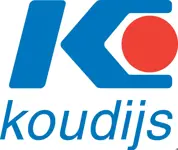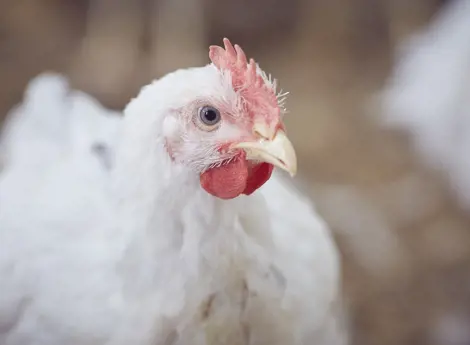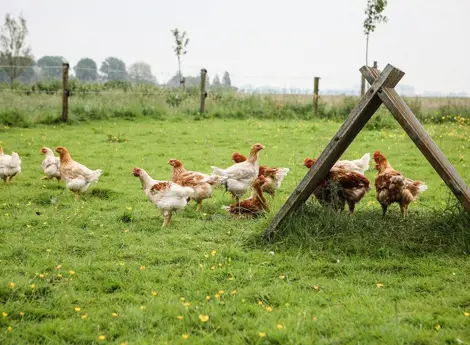Chicken challenges
Since the 1980s, poultry meat has been produced with the aim of delivering a product that is nutritionally, organoleptically, and qualitatively good. However, times change, and the conditions and standards for producing good poultry meat are also changing.

Production nearly without antibiotics
In the past, mass, speed, and efficiency were the primary drivers for poultry meat production. Now, aspects such as growth rate, housing conditions, animal welfare, and safety for both humans and nature are being measured and assessed.
One recent change is the mandatory reduction of antibiotics. The choice of antibiotics is limited, and financial penalties are imposed on those who use them routinely. In the Netherlands, this has led to a reduction of approximately 70% in antibiotic use.
Consumers, society and retailers drive change
The use of antibiotics triggered many changes. Since 2007, increasing demands from consumers and retailers, as well as from stakeholders like society and politics, have led to a broad range of concepts. These are primarily developed by governments, private partners, and retailers, each with a specialized approach including management, genetics, and nutrition (see table 1).
Table 1. Overview of the most common and upcoming concepts. ECC = European Chicken Commitment, GNK/KvM = Good Nest Chicken/Chicken of Tomorrow

The chicken has changed
Focusing on the latest development, from 2027, many retailers will switch to purchasing poultry meat produced under the label of the European Chicken Commitment (ECC). ECC is a European agreement between retailers and animal welfare organizations to implement changes in housing and welfare. It's also referred to as Better Chicken Commitment (BCC) outside Europe, but both stand for the same goals. A total of 300 companies and 50 animal welfare organizations support this commitment, representing over 50% of poultry meat production in Europe at present.
Key areas for improvement include:
- Breed selection → only approved breeds
- Stocking density → maximum 30 kg/m2
- Housing → daylight, light intensity, light regimen, enrichment material, potentially with outdoor access (WinterGarten)
- Slaughter procedure → more humane and preferably using CO2 gas
Besides these specific examples, Portugal and Austria have already provided guidelines for alternative forms of poultry farming through legislation. Additionally, the UK's Red Tractor initiative outlines measures for poultry farming.
Nutritional challenges to overcome
At Koudijs, we have extensive experience in addressing these new challenges. Providing sufficient and high-quality proteins (amino acids), energy, minerals, traces, and vitamins in the right balance in feed is crucial. The focus has shifted from maximizing overall growth to maximizing daily growth (growth goals) with associated growth patterns and conditions.
Adapting to different genetics requires adjustments in digestible amino acids, energy levels, vitamins, and trace elements in the feed. The imposed growth restrictions can be challenging with the current potential of various genetics. For instance, as shown in graph 2, the daily growth differs significantly, requiring a different approach.
Due to reduced daily growth and subsequently lower energy, digestible amino acids, and mineral needs per kilogram of feed, there can be cost-saving advantages. However, with an increased age (+49 days), feed conversion (FC) can rise by over 15% to 25% per kilogram of poultry meat. The Gross FC per kilogram live weight shifts from 1.60 to 2.0 per chick from hatch to slaughter.
The form in which feed is offered is also essential. Standardized pellet feeding per age group is no longer sufficient. The maximum growth per day (growth goal), genetics, and local poultry farm management will be more influential. This might involve feeding crumbs/meals or transitioning from 14 days to a feeding concept with whole wheat or sorghum. The latter may negatively impact FC but could be economically beneficial and support gut health. However, this decision should always be tailored to the local market.
Maintaining gut health
Different genetics mean different susceptibility, for instance, to the intestinal parasite coccidiosis. Slow-growing breeds have a different shedding pattern of coccidia, causing infections at different times. Particularly, the shift in Eimeria Acervulina, Eimeria Tennella, and subclinical infection with Eimeria Maxima can significantly impact results over a longer period.
Monitoring gut health by veterinarians and research institutions shows that the coccidia shedding pattern is observed approximately 7-10 days later. Monitoring is a good initial step, but a clear rotation or shuttle program for anticoccidials can provide much-needed stability. Vaccination against coccidiosis within slow-growing concepts has proven effective.
Understanding and supporting the gut health of chicks becomes increasingly important. As nutritionists and technical specialists at Koudijs, we have experience influencing the reduction of crude protein, appropriate levels of essential amino acids, fat quality, raw material choices, and particle size distribution after milling.
It's also crucial to critically evaluate the use of products like pro- and prebiotics, and bactericidal products such as organic acids, medium-chain fatty acids, and enzymes.
Do they fit the new formulation? The aim is to collectively minimize the risk of gut disorders and reduce the need for antibiotics while maintaining technical results.
We are ready to tackle these challenges
Numerous challenges arise in the renewed possibilities in poultry meat production and nutrition. It's crucial that the goals of poultry (meat) consumers align with the possibilities and limitations of poultry farms.
During change, maintaining ongoing conversations with all stakeholders and experts is vital to producing optimal poultry feed as effectively and flexibly as possible. At Koudijs, we are eager to brainstorm and support your transition towards the new European chicken, in whatever form it takes.
About the author

Jos van Arkel
Poultry Specialist




